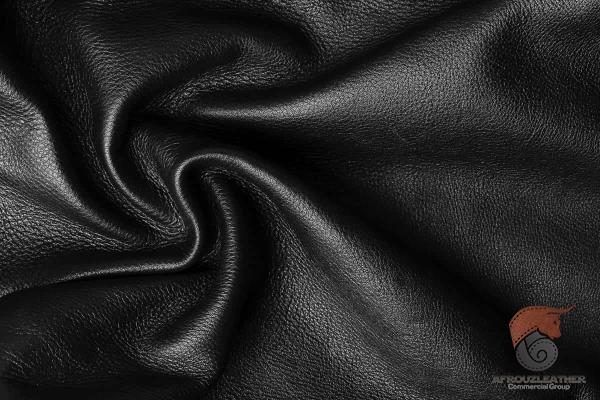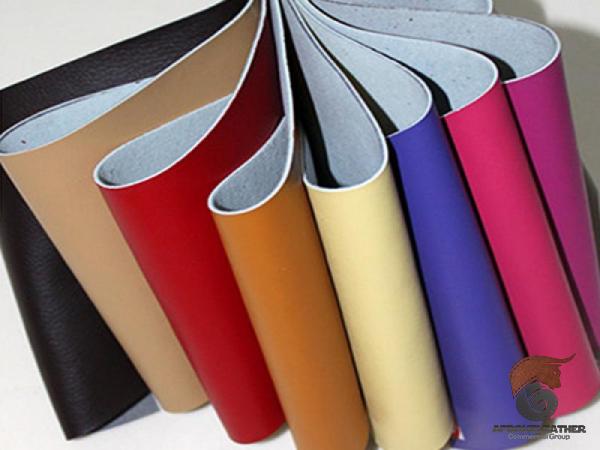When it comes to the world of fashion and interior design, there is a timeless appeal and luxuriousness associated with real leather. Genuine leather hides are prized for their durability, versatility, and natural beauty, making them a popular choice for various applications. In this article, we will delve into the fascinating world of real leather hides for sale, discussing their characteristics, types, sourcing methods, and factors to consider when purchasing them. 1. Understanding Real Leather Hides: Real leather hides are derived from animal skins or hides through a complex process known as tanning. This process involves treating the hides with chemicals to preserve their quality and prevent decomposition. Full-grain leather is considered the highest quality as it maintains the animal’s natural markings and is the most durable. Top-grain leather and corrected-grain leather are also commonly used, each having distinct characteristics. 2. Types of Real Leather Hides: Real leather hides come in various types, including: a. Cowhide: Cowhide is the most popular type of leather hide due to its durability, strength, and availability. It is widely used in fashion, upholstery, and accessories.
leather
 b. Sheepskin: Sheepskin leather is known for its softness and suppleness. It is commonly used in making garments, footwear, and luxury accessories. c. Pigskin: Pigskin leather is recognized for its unique texture, durability, and flexibility. It finds applications in making handbags, furniture, and sporting goods. d. Exotic Leathers: Exotic leathers such as alligator, crocodile, snake, and ostrich offer a unique and luxurious appeal. These hides are highly sought-after for high-end fashion and accessories, but they can be expensive. 3. Sourcing Methods for Real Leather Hides: There are primarily two sourcing methods for real leather hides: a. Traditional Sourcing: Traditional sourcing involves obtaining leather hides from animals that are reared for their meat or other products. This method ensures a sustainable and ethical production process. Strict guidelines and regulations are in place to ensure the humane treatment and responsible processing of animals. b. Salvaged and Recycled Leather: Salvaged and recycled leather involves repurposing post-industrial leather waste or discarded leather products to create new hides. This method promotes sustainability and reduces waste.
b. Sheepskin: Sheepskin leather is known for its softness and suppleness. It is commonly used in making garments, footwear, and luxury accessories. c. Pigskin: Pigskin leather is recognized for its unique texture, durability, and flexibility. It finds applications in making handbags, furniture, and sporting goods. d. Exotic Leathers: Exotic leathers such as alligator, crocodile, snake, and ostrich offer a unique and luxurious appeal. These hides are highly sought-after for high-end fashion and accessories, but they can be expensive. 3. Sourcing Methods for Real Leather Hides: There are primarily two sourcing methods for real leather hides: a. Traditional Sourcing: Traditional sourcing involves obtaining leather hides from animals that are reared for their meat or other products. This method ensures a sustainable and ethical production process. Strict guidelines and regulations are in place to ensure the humane treatment and responsible processing of animals. b. Salvaged and Recycled Leather: Salvaged and recycled leather involves repurposing post-industrial leather waste or discarded leather products to create new hides. This method promotes sustainability and reduces waste.
Specifications of leather
 4. Factors to Consider When Purchasing Real Leather Hides: When purchasing real leather hides, it is essential to consider the following factors: a. Quality: Examine the quality of the leather hides by looking for even color distribution, supple texture, and minimal blemishes. The type of tanning used can also impact the overall quality of the hide. b. Thickness: Consider the thickness of the hide based on its intended use. Thicker hides are suitable for heavy-duty applications, while thinner hides are better for garments and accessories. c. Size and Shape: Assess the size and shape of the leather hides to ensure they meet your project requirements. Variations in sizes and shapes can impact the amount of material needed and might influence the overall cost. d. Finishing and Treatments: Some hides undergo additional treatments, such as dyeing, embossing, and waxing, to achieve specific aesthetic effects. Consider whether the finishes align with your design vision. e. Price and Budget: Set a budget and consider pricing factors, such as quality, type, and size, when choosing leather hides. While genuine leather is generally more expensive, it often offers superior durability and longevity. 5. Applications of Real Leather Hides: Real leather hides have a wide range of applications, including: a. Fashion Industry: Real leather hides are extensively used in the fashion industry for creating garments, accessories, and footwear.
4. Factors to Consider When Purchasing Real Leather Hides: When purchasing real leather hides, it is essential to consider the following factors: a. Quality: Examine the quality of the leather hides by looking for even color distribution, supple texture, and minimal blemishes. The type of tanning used can also impact the overall quality of the hide. b. Thickness: Consider the thickness of the hide based on its intended use. Thicker hides are suitable for heavy-duty applications, while thinner hides are better for garments and accessories. c. Size and Shape: Assess the size and shape of the leather hides to ensure they meet your project requirements. Variations in sizes and shapes can impact the amount of material needed and might influence the overall cost. d. Finishing and Treatments: Some hides undergo additional treatments, such as dyeing, embossing, and waxing, to achieve specific aesthetic effects. Consider whether the finishes align with your design vision. e. Price and Budget: Set a budget and consider pricing factors, such as quality, type, and size, when choosing leather hides. While genuine leather is generally more expensive, it often offers superior durability and longevity. 5. Applications of Real Leather Hides: Real leather hides have a wide range of applications, including: a. Fashion Industry: Real leather hides are extensively used in the fashion industry for creating garments, accessories, and footwear.
buy leather
 The durability, softness, and aesthetic appeal of leather make it a popular choice among designers and consumers alike. b. Upholstery: Leather upholstery has a timeless appeal. Leather hides are commonly used to create luxurious furniture pieces, car interiors, and other upholstered products. Leather’s durability and resistance to wear make it an ideal choice for high-traffic areas. c. Interior Design: Leather hides can transform the look and feel of interior spaces. From wall paneling and flooring to decorative accents and cushions, leather adds a touch of sophistication and elegance to any design concept. d. Art and Crafts: Leather hides can be utilized in various art forms, including sculptures, paintings, and crafts. The versatility and unique texture of leather make it a medium of choice for many artists and craftsmen. Conclusion: Real leather hides for sale are prized for their timeless appeal, durability, and natural beauty. Whether utilized in the fashion industry, interior design, upholstery, or art, genuine leather adds a touch of luxury and sophistication to any project. By understanding the characteristics, types, sourcing methods, and factors to consider when purchasing leather hides, one can make informed decisions to ensure a successful outcome. So, explore the world of real leather hides and unleash your creativity with this exceptional material.
The durability, softness, and aesthetic appeal of leather make it a popular choice among designers and consumers alike. b. Upholstery: Leather upholstery has a timeless appeal. Leather hides are commonly used to create luxurious furniture pieces, car interiors, and other upholstered products. Leather’s durability and resistance to wear make it an ideal choice for high-traffic areas. c. Interior Design: Leather hides can transform the look and feel of interior spaces. From wall paneling and flooring to decorative accents and cushions, leather adds a touch of sophistication and elegance to any design concept. d. Art and Crafts: Leather hides can be utilized in various art forms, including sculptures, paintings, and crafts. The versatility and unique texture of leather make it a medium of choice for many artists and craftsmen. Conclusion: Real leather hides for sale are prized for their timeless appeal, durability, and natural beauty. Whether utilized in the fashion industry, interior design, upholstery, or art, genuine leather adds a touch of luxury and sophistication to any project. By understanding the characteristics, types, sourcing methods, and factors to consider when purchasing leather hides, one can make informed decisions to ensure a successful outcome. So, explore the world of real leather hides and unleash your creativity with this exceptional material.

Your comment submitted.